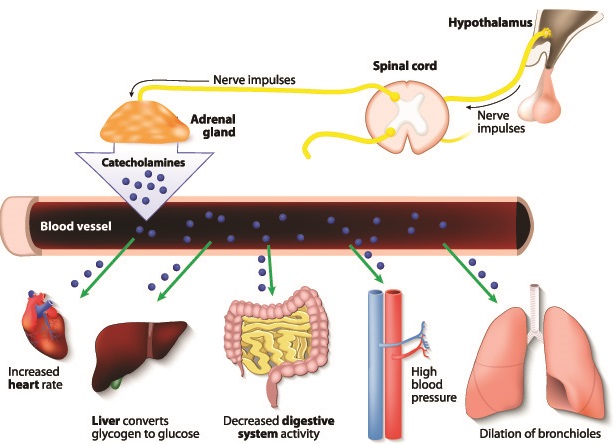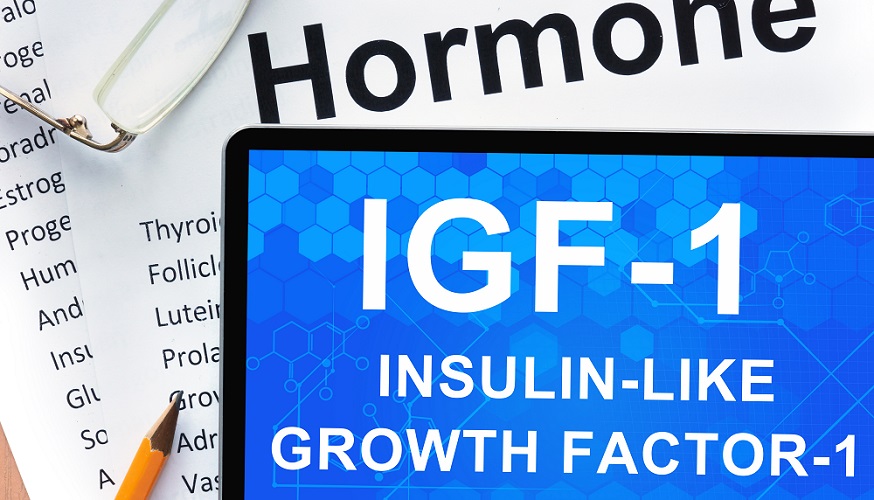Definition
IGF-1, insulin-like growth factor-1, or somatomedin C is a peptide (short chain of amino acids) hormone that controls tissue growth by regulating growth hormone (GH) production. It also stimulates tissue growth without the influence of growth hormone. When synthesized in the liver and in certain cells and tissues as an autocrine or paracrine hormone this growth factor works independently of GH.
What is IGF-1?
IGF-1 is a hormone growth factor that must bind to an insulin-like growth factor binding protein (IGFBP) to travel from the liver (via the bloodstream) into the brain and individual cells. It is part of a hormone-based signaling pathway called the somatotropic axis.
The somatotropic axis begins with the release of two hormones called growth hormone-releasing hormone (GHRH) and ghrelin. These encourage the pituitary gland to produce more growth hormone. Once produced, GH binds to specific receptors. When bound, the liver and other, less influential organs are instructed to produce IGF-1.
Upon binding to its own receptor, IGF-1 signals the pituitary gland to secrete less growth hormone and, at the same time, tells the hypothalamus to secrete less GH-releasing hormone. This feedback system is constantly active so that levels of both growth hormone and IGF-1 remain in balance.

When IGF-1 receptors become less sensitive or when IGF-1 is not produced in sufficient quantities the entire somatotropic feedback system is affected. As IGF-1 is essential for brain and cell development, low levels can cause serious developmental problems. Similarly, gene mutations or problems in the production of the other hormones of the somatotropic axis and their receptors can cause a domino effect.
IGF-1 levels are high from the fetal stage to the third decade of life. From this point on, production deteriorates quite steadily; the older we are, the less IGF-1 we produce. This is also mirrored in growth hormone production.
Yet we are still unsure whether higher levels of IGF-1 in old age is good for our health. Studies give extremely different results – some show that high levels of IGF-1 in the elderly increase the risk of dementia, other that low levels of IGF-1 increase this risk. Some studies show that high IGF-1 levels increase the risk of cancer, some show the opposite. We still have a lot to learn.

IGF-1 Hormone Function
IGF-1 hormone function regulates various growth-related and metabolic processes in the human body but we still know very little about many of these mechanisms.
Insulin-like growth factor is a pleiotropic hormone which means it is coded by a single gene that also codes for other proteins. The same gene that holds the code for insulin and relaxin synthesis also codes for IGF-1. Mutations in this gene can affect all or some of these hormones and produce multiple physiological and metabolic changes.
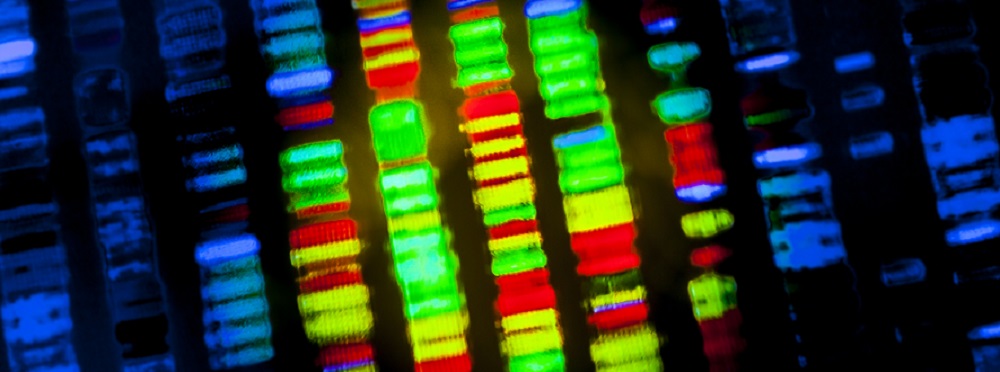
Relaxin is mainly involved in male and female reproduction. Insulin and IGF-1 play integral roles in our metabolism and physiological development (tissue growth). Previously thought to have very separate actions, insulin-like growth factor and insulin binding proteins and receptors are now known to interact. As diabetics often have combined disorders that involve multiple hormones, and as the primary cause of diabetes is impaired insulin production or insulin resistance, all associated factors are grouped together under the term insulin protein superfamily.
Insulin-like growth factor has a greater role in growth than insulin but both are essential for glucose regulation. For example, IGF-1 stimulates glucose transport in osteoblasts – the cells that form bone tissue. IGF-1 is also known for its roles in our sense of smell, neuron synapses, bone growth and mineralization, cell growth, cell differentiation, and cell death.

In the Central Nervous System
GH and IGF-1 both contribute to neural development, nerve myelination, amyloid clearance – so important in the development of Alzheimer’s disease – and anti-inflammatory mechanisms within the central nervous system.
Multiple sclerosis patients with high disability scores usually have low levels of GH; Alzheimer patients typically present with low IGF-1 and GH levels. The older we get, the less growth hormone we produce and the more our neurons degenerate. The younger we are, the higher our levels of insulin-like growth factor-1 and growth hormone and the more efficiently our brains function. Children with higher levels of IGF-1 have higher IQs. Once physical growth stops, IGF-1 helps at a cellular level in damaged neuron repair.
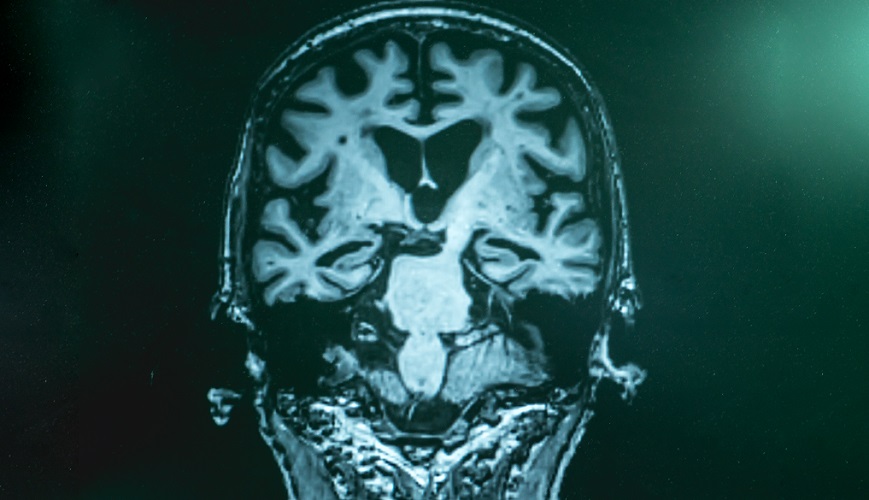
Cardiovascular Function
Both IGF-1 and GH are partially responsible for cardiovascular system development and protection. They promote vasodilation or widening of the blood vessels to increase blood flow to parts of the body that require more nutrients and oxygen. Wider blood vessels also slow down the development of atherosclerosis.
Research shows that insulin-like growth factor 1 acts as an antioxidant and anti-inflammatory inside the blood vessels. In some disorders, low levels of GH and high levels of IGF-1 are found when the pituitary gland that produces GH is damaged. One of these disorders is gigantism (at a later stage called acromegaly), where the bones of the hands, feet, and face grow too large. People with acromegaly are more likely to develop cardiovascular problems. The large jaw that is typical of acromegaly, as you can see below, is due to excessive bone growth.

In the Kidneys
Development of the capillaries of the kidney glomerulus depends on IGF-1 levels. Insulin-like growth factor increases blood flow to the kidneys and the glomerular filtration rate (GFR) by directly or indirectly interacting with the renin-angiotensin system (RAS).
Increased insulin-like growth factor-1 activity has been reported in cases of polycystic kidney disease, while IGF-1 resistance – where the body produces enough of this polypeptide but is unable to metabolize or use it – is seen in many cases of chronic kidney failure.
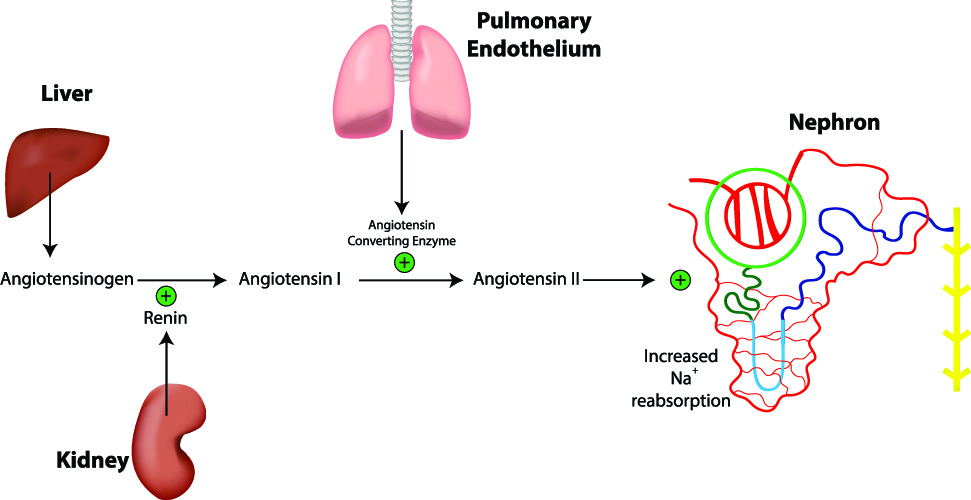
Diabetes
The full name – insulin-like growth factor-1 – tells us that this hormone plays a role in diabetes. Knowing that it is part of the insulin protein superfamily gives yet another clue to its importance. IGF-1 DNA codes match nearly 50% of the DNA codes of insulin. Too low and too high IGF-1 levels are found in cases of impaired glucose tolerance – an early sign of type II diabetes mellitis.
Both insulin and IGF-1 reduce blood sugar levels by helping cells absorb it. This reduces the amount of glucose produced in the liver. Growth hormone, on the other hand, increases glucose production. As part of a feedback system, these hormones help to control blood sugar levels in healthy individuals. In the presence of diabetes this feedback system is completely out of balance.

Men are less likely to develop insulin resistance in the presence of low insulin-like growth factor-1 levels. Even during puberty, girls are less insulin sensitive (more insulin resistant) than boys. Some sex-specific growth-hormone replacement therapies have further shown this trend. There are no approved growth factor therapies for the treatment of diabetes and current research is not producing convincing results that either hormone has potential.
In Blood Cells
The bone marrow is the site of hematopoiesis or blood cell production. A whole range of growth factors are involved in the manufacture of white blood cells, red blood cells, and platelets. These cells all differentiate from a hematopoietic stem cell into progenitor cells before differentiating into more recognizable forms such as T and B lymphocytes and erythrocytes. These stages of development all occur under the regulation of growth factors.
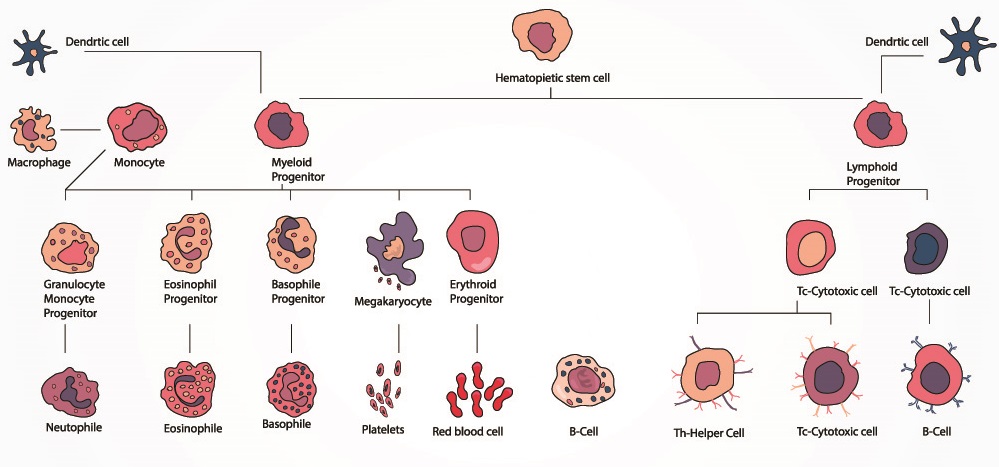
One of these regulating factors is insulin-like growth factor-1. Osteoblasts, chondrocytes (cartilage-producing cells), and osteocytes all have IGF-1 receptors. Insulin-like growth factor-1 promotes bone and cartilage production and low levels are associated with osteoporosis. It also protects these cells from oxidative stress and slows cell death (apoptosis).
Growth hormone increases osteoblast production but requires IGF-1 to do this. Together, they regulate bone formation and bone resorption. When dysregulated, abnormal bone growth is a potential result. As we have already seen, gigantism or acromegaly results in excess bone growth. This disorder is the result of GH and IGF-1 imbalance caused by a damaged pituitary gland.
Low levels of insulin-like growth factor-1 may even play a role in the progress of acute lymphoblastic leukemia (ALL). This is probably due to another aspect of IGF-1 – its binding proteins. Children with ALL seem to have low levels of IGF-1 and high numbers of binding proteins. This research is still relatively new and as yet, unexplained.

As IGF is also produced in cancer cells, low or high levels can slow or accelerate cancer growth respectively. As of yet we have not found a way to use insulin-like growth factor as a cancer therapy.
GH vs IGF-1
IGF-1 production depends upon the availability of growth hormone and the function of the pituitary gland and the liver. GH production depends upon the availability of IGF-1. As star players in the somatotropic feedback system, this codependency is not surprising.
Growth hormone, produced in the pituitary gland, does not only regulate growth. In higher quantities GH increases the breakdown of triglycerides in the blood and slows down lipid uptake in adipocytes (fat cells). For this reason, injected human growth factor (HGH), although not approved, is being researched as a future weight loss aid. It is unlikely this therapy will ever pass the stringent criteria of the FDA – high HGH levels are known to increase the risk of cardiovascular disease. Increased IGF-1 levels as a result of high GH may also increase the risk of developing certain types of cancer.

Other growth hormone functions are to increase muscle mass and glucose production in the liver. It is thought that growth hormone may even have mood-enhancing effects. People with low levels often feel very tired and depressed.
Synthesis and regulation of GH depends on multiple factors. Stress, nutrition and sleep quality can reduce or increase how much growth hormone we produce.
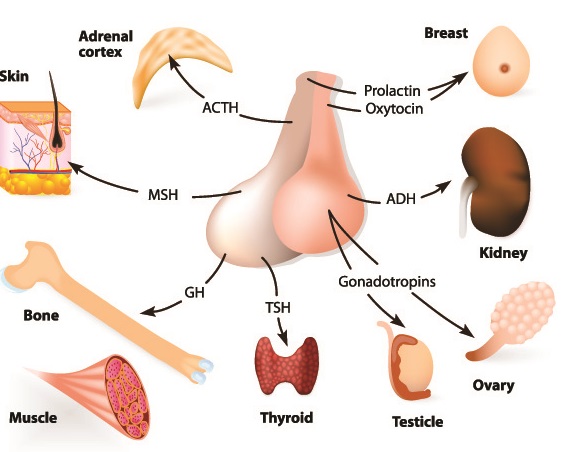
IGF-1 is produced primarily in the liver. It increases glucose uptake at a cellular level, bringing blood sugar levels down rather than up (as with GH). Insulin-like growth factor-1 also stimulates the uptake of fatty acids.
It does not seem to have as much of an effect upon muscle mass as growth hormone even though it plays a role in protein synthesis. Like GH, low levels of IGF-1 are associated with low energy and mood.
Both hormones present with a U-shaped curve that shows us that too high or too low levels create a negative effect. This is one of the reasons why research into IGF-1 levels offers such contradictory results. If you produce too little IGF-1 and suffer from the consequences, taking large doses could bring you to the opposite side of the curve with similarly negative effects. Just like the story of Goldilocks and the Three Bears – only one bowl of porridge is just right – the extremes of too hot (too high IGF-1) and too cold (too low) are definitely not preferable.

The same is true of GH. Neither hormone should be taken as an over-the-counter therapy – their administration requires regular blood testing and should be under the control of an experienced endocrinologist.
IGF-1 Testing
IGF-1 testing is primarily used to measure growth hormone levels. A test for insulin-like growth factor measures serum (blood circulating) levels. It is more common for results to be low, although pituitary tumors (sometimes leading to gigantism or acromegaly) can produce unusual results. The actor who played Lurch in the original Addams Family series – Ted Cassidy (below) – had gigantism as a child (leading to his large stature) and acromegaly after puberty due to an overactive pituitary gland.

IGF-1 is used to test GH production as its daily curve is more stable – growth hormone production fluctuates throughout the day. However, if the liver is damaged IGF-1 results will not be reliable. Even when the liver is not damaged these levels do not exactly follow the GH curve – high concentrations of GH only bring IGF-1 levels to a certain point. After this point, hepatocytes (liver cells) are unable to keep up.
Low IGF-1 levels indicate GH deficiency or receptor insensitivity. In children, low GH levels slow growth and development. If administered growth hormone, they can achieve normal height.

A decrease in IGF-1 production is possible in reaction to impaired pituitary function; low levels of GH produce similarly low levels of IGF-1 in the feedback system. Impaired pituitary function can be caused by inherited genes or is the result of head trauma and inflammation. Some infections can also affect the pituitary gland.
Low insulin-like growth factor-1 could also indicate problems in the liver or kidneys as these organs are most responsible for producing it.
High levels of IGF-1, the opposite end of the U-shaped curve, are most commonly the result of excess GH production. Higher levels are expected during puberty and pregnancy which makes sense as these are primary periods of growth and development. Pregnant women who produce less IGF-1 throughout pregnancy are more likely to develop gestational diabetes.

IGF-1 LR3 – Health Supplement or Carcinogen?
Researchers developed a synthetic version of IGF-1 called IGF-1 LR3 (long arginine 3-IGF-1) so they could study the actions of this hormone for longer periods. Natural IGF-1 has a very short lifespan (half life) and likes to bind with other proteins that can change laboratory-based test results.
IGF-1 LR3 is only legal for use in laboratories but it has found its way to the bodybuilding market. It is used to increase skeletal muscle growth and speed up fat breakdown when given as an intramuscular injection. Oral supplements can also be found. The safety of either treatment is unknown – there have been no large-scale human clinical trials. This synthetic insulin-like growth factor was never meant to be manufactured or used as a health supplement.

IGF-1 LR3 is not an approved drug for human use; its long-term effects are a mystery. The many roles of natural insulin-like growth factor-1, including stimulation of cell reproduction and increasing cell longevity, might make it a carcinogen. Some studies report a positive correlation between IGF‐1 and breast, colorectal, and prostate cancer; others do not. Whether this also applies to IGF-1 LR3 remains to be seen.
Acromegaly
IGF-1 testing can help to diagnose acromegaly and gigantism. These describe the same disorder that is caused by pituitary gland malfunction. Gigantism occurs before the bone plates of the long bones (femur, tibia, fibula, humerus, radius, ulna, metacarpals of the fingers, and metatarsals of the toes) fuse. Acromegaly occurs after these bones have fused (adults). Instead of the long bones becoming longer, the bones of the face, feet, and hands increase in size.
Testing for gigantism or acromegaly involves an IGF-1 test and an oral glucose tolerance test. A glucose tolerance test requires an individual to drink a sugary fluid and have blood glucose levels measured at regular intervals. This shows how rapidly insulin is produced and how sensitive the cells are to it. Usually, the higher the blood glucose level, the less GH and IGF-1 are produced.

If a person has gigantism or acromegaly, high blood sugar levels do not affect GH production as the pituitary gland does not respond correctly; GH and IGF-1 levels will be high rather than low.
Growth hormone and blood glucose levels are very much connected – they are all part of the insulin protein superfamily. The combination of elevated insulin-like growth factor-1 and GH with increased glucose in the blood is a strong signal for the diagnosis of acromegaly; however, this is not always the case. These two hormones are also elevated by stress, eating disorders, thyroid malfunction, diabetes, puberty, pregnancy, and liver and kidney failure.
